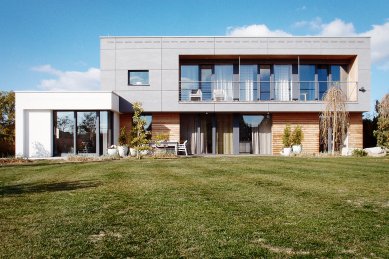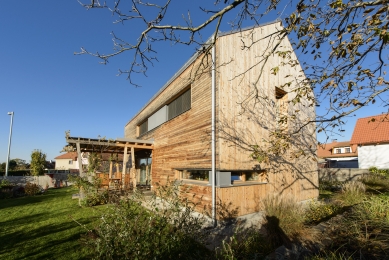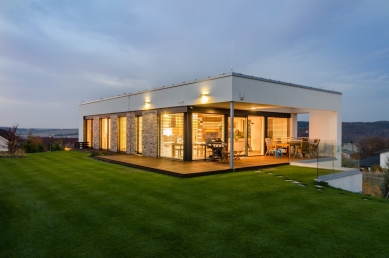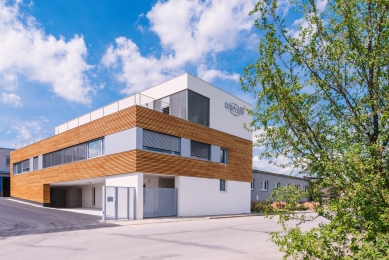
The share of new passive houses in the Czech Republic remained at six percent last year
Prague - The share of new passive houses, i.e., houses with very low energy needs, remained at six percent of the total number of newly built family homes last year. More than a thousand were completed. The total number of passive houses reached over 6000. This was reported by Tomáš Vanický, director of the Passive House Centre, to ČTK. According to the Czech Statistical Office, 19,156 family homes were completed in the Czech Republic last year.
"The numbers provided are only approximate. Exact statistics still do not exist, so we are relying on the frequency of interest from applicants for consultations during the project and construction at the Passive House Centre, as well as data from the New Green Savings program, where last year the number of interested parties increased by more than 30 percent compared to the average of previous years," Vanický stated.
For a passive house, the key factor is the recovery of heat, known as recuperation, where a system of pipes exchanges air while the heat remains inside. The first house dubbed passive was built in 1990 in Darmstadt, Germany.
According to Vanický, the most interest in this type of construction still comes from investors and builders of family homes. "However, we are also registering an increase in the public sector. Last year, it specifically included elementary and kindergartens, hospitals, municipal offices, youth centers, as well as homes for seniors and cultural centers," added Vanický.
Construction that considers passive standards is, according to him, also expanding into apartment buildings. In the area of traditional development, however, it still tends to be the exception. Last year, for example, the residential building U Perníkářky was approved in Prague 5. This year, the community house for seniors in Týnec nad Labem is nearing completion.
Examples of apartment buildings from recent years include the Ecocity Malešice project or Hyacint Modřany in Prague. Passive standards were applied to projects such as a kindergarten in Moravské Budějovice or Semily, the Karel Malich Art School in Holice, an elementary school in Židlochovice, 12 elementary schools in the vicinity of Prague (e.g., Psáry and Jesenice), a seniors' home in southern Moravian Modřice, hospitals in Olomouc and Šternberk, and a public library in Rožnov pod Radhoštěm.
The For Pasiv fair of low-energy passive and zero constructions began today at the Prague exhibition grounds in Letňany. It ends on Saturday, February 9.
"The numbers provided are only approximate. Exact statistics still do not exist, so we are relying on the frequency of interest from applicants for consultations during the project and construction at the Passive House Centre, as well as data from the New Green Savings program, where last year the number of interested parties increased by more than 30 percent compared to the average of previous years," Vanický stated.
For a passive house, the key factor is the recovery of heat, known as recuperation, where a system of pipes exchanges air while the heat remains inside. The first house dubbed passive was built in 1990 in Darmstadt, Germany.
According to Vanický, the most interest in this type of construction still comes from investors and builders of family homes. "However, we are also registering an increase in the public sector. Last year, it specifically included elementary and kindergartens, hospitals, municipal offices, youth centers, as well as homes for seniors and cultural centers," added Vanický.
Construction that considers passive standards is, according to him, also expanding into apartment buildings. In the area of traditional development, however, it still tends to be the exception. Last year, for example, the residential building U Perníkářky was approved in Prague 5. This year, the community house for seniors in Týnec nad Labem is nearing completion.
Examples of apartment buildings from recent years include the Ecocity Malešice project or Hyacint Modřany in Prague. Passive standards were applied to projects such as a kindergarten in Moravské Budějovice or Semily, the Karel Malich Art School in Holice, an elementary school in Židlochovice, 12 elementary schools in the vicinity of Prague (e.g., Psáry and Jesenice), a seniors' home in southern Moravian Modřice, hospitals in Olomouc and Šternberk, and a public library in Rožnov pod Radhoštěm.
The For Pasiv fair of low-energy passive and zero constructions began today at the Prague exhibition grounds in Letňany. It ends on Saturday, February 9.
The English translation is powered by AI tool. Switch to Czech to view the original text source.




Related articles
0
05.01.2023 | The share of passive houses in completed buildings is growing annually
1
16.03.2021 | The number of new passive houses in the Czech Republic grew by about one third last year
0
10.02.2020 | The number of new passive houses in the Czech Republic increased by about a fifth last year
0
08.02.2018 | The new director of the Passive House Center is Tomáš Vanický
0
09.02.2017 | The share of new passive houses in the Czech Republic last year remained at 4.5%
0
04.07.2014 | A thousand young experts on passive houses are preparing to enter the market.
0
31.01.2014 | In Modřice, the first passive house for seniors has been opened for 64 million
0
11.02.2013 | The number of passive houses in the Czech Republic is negligible; there are several hundred of them











